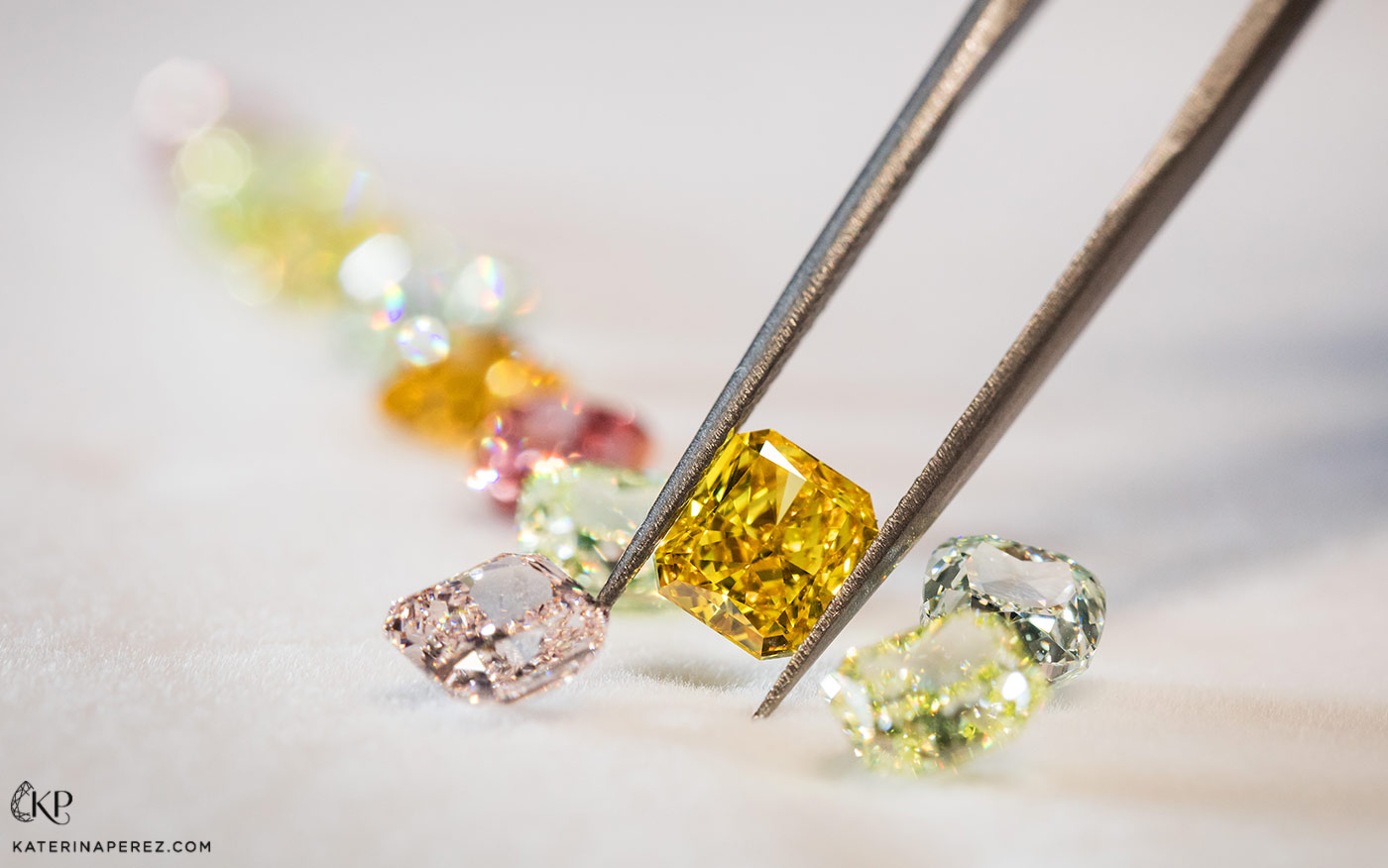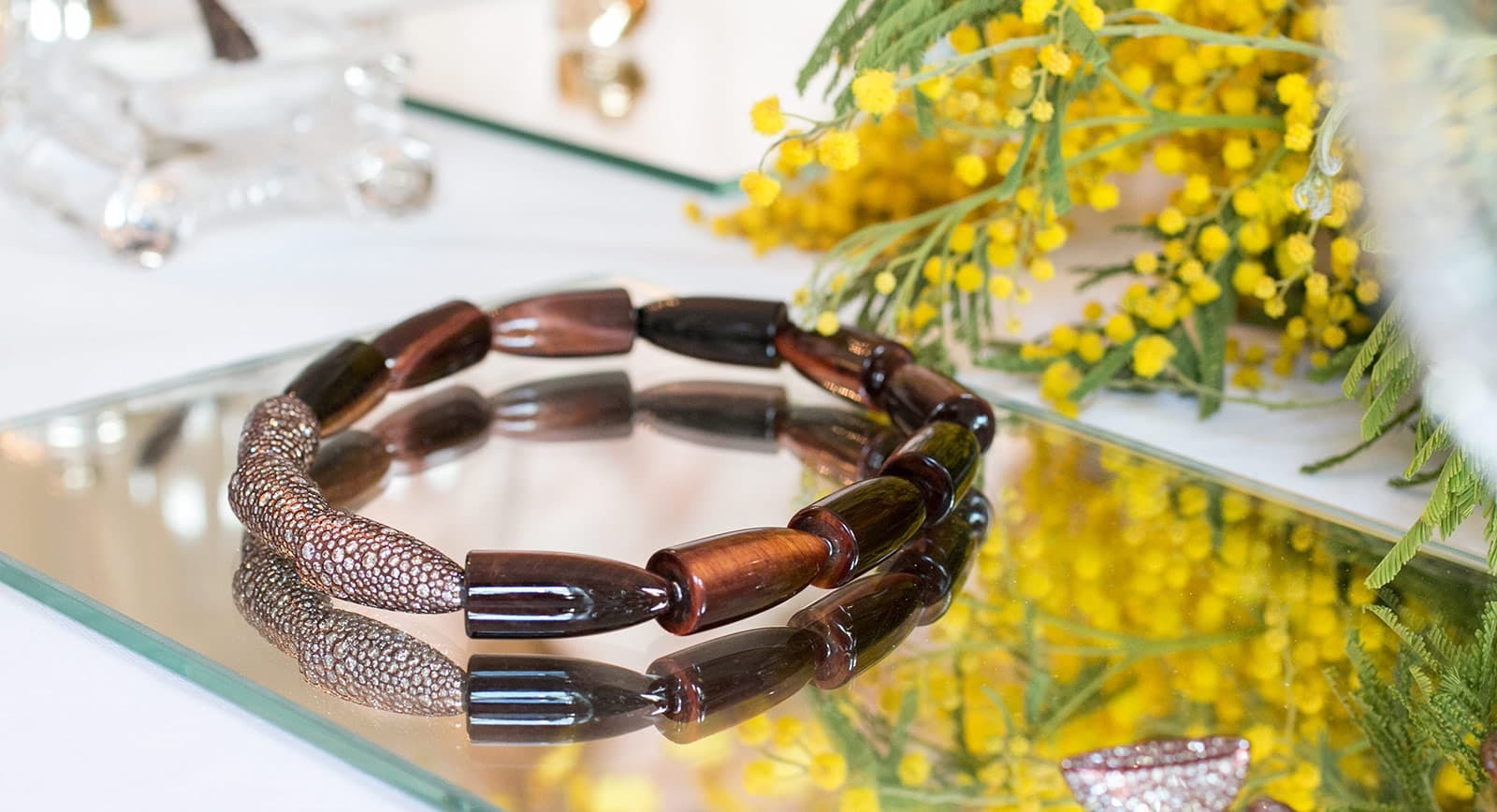

Kunming Diamonds: Experts on Fancy Coloured Diamonds
Ask anyone what they would invest in if they had a million dollars to spare, and many would say diamonds. Before releasing her only fine jewellery collection, ‘Bijoux de Diamants’ in 1932, Coco Chanel wrote: “I chose diamonds because they embody the greatest value in the smallest volume.” Although affluent jewellery fans and investors have tended to prefer colourless diamonds in the past, this demographic has now been introduced to the spectrum of colour and spectacular desirability of fancy coloured diamonds. Harsh Maheshwari is the owner of one of the largest coloured diamond purveyors in the world: Kunming Diamonds.
To begin with, I want to put into perspective how rare coloured diamonds are: for every 10,000 colourless stones, one fancy coloured is mined – and in order to produce one carat of high-quality coloured diamond, 250 tons of raw materials need to be processed.
Over 120 million carats are mined each year, but only about 25% will be polished to be ultimately used in jewellery. Now you can understand how much digging goes into finding a beautiful coloured diamond. – Harsh Maheshwari

Kunming Diamonds 0,71 cts fancy intense pink and 0,72 cts fancy intense blue diamonds. Photo by Simon Martner
Some diamond hues are especially valuable – something which directly depends on their scarcity. For example, the hue of fancy coloured diamond that is recognised as the rarest in the world is the red diamond – the Gemological Institute of America (GIA) has not issued a single certificate for a red diamond between 1957 and 1987. Next come blue diamonds, which have been frequently breaking records at jewellery auctions in the last five years. Pink diamonds are also rare; between 90%-95% are mined in Australia’s Argyle mine, and the fact that there are only a couple of years left before this source is depleted makes pink diamonds truly rare gems.

Kunming Diamonds set of yellow, pink and orange diamonds. Photo by Simon Martner
Important and desirable coloured diamonds are one of the safest and simplest choices for storing value. Just like rare works of art, hidden in a safe or worn as jewellery, fancy coloured diamonds never fail to keep their promise of value. – Harsh Maheshwari

Kunming Diamonds set of green, blue and pink diamonds. Photo by Simon Martner
Of course, when buying a coloured diamond, you first need to pay attention to the most important factor that directly affects the price of the stone: its colour. While colourless diamonds are rated on the GIA colour scale from D to Z, when it comes to fancy coloured diamonds, personal preference plays a major role.
Some clients appreciate colour more than the rarity factor, which makes some hues more popular on the market. Other clients opt for elitism and collect diamonds for their uniqueness. However, there are three basic features that break down a diamond’s colour: hue (colour), saturation (intensity) and tone (shade) and the more one is educated about colours, the more one appreciates the value of it. – Harsh Maheshwari
Founded in 1993 by Ajay Maheshwari, Kunming Diamonds is one of the largest supplier of coloured diamonds in world. Having worked in the family business for 6 years, Ajay’s son Harsh has had first-hand experience with diamonds of all colours and shades, and deals only in naturally coloured stones – the family company’s focus is on unenhanced, non-treated diamonds that have been ethically mined. Harsh points out that not all customers are familiar with the full colour spectrum of diamonds, which varies from red, orange, yellow and green to pink, blue and purple.
There are a lot of different colours that can be used for each of the overtones, yellowish orange, greenish blue, purplish pink etc. – Harsh Maheshwari

Kunming Diamonds 4.68 fancy brown diamond and 8.12cts fancy deep brown yellow round diamonds. Photo by Simon Martner
Finally, I asked him to share one fact that every fan of coloured diamonds should know. According to Harsh, chameleon diamonds have increased in both demand and price in recent years. They are the only diamonds that have the unique ability to appear to change shade – shifting between olive green to orange or yellow depending on the light source and temperature. Scientists have so far failed to establish the chemical or conditions which contribute to this fascinating characteristic, and therefore chameleon diamonds remain a real mystery of nature – a jewel which no-one can imitate synthetically.

WORDS
Katerina Perez is a jewellery insider, journalist and brand consultant with more than 15 years’ experience in the jewellery sector. Paris-based, Katerina has worked as a freelance journalist and content editor since 2011, writing articles for international publications. To share her jewellery knowledge and expertise, Katerina founded this website and launched her @katerina_perez Instagram in 2013.










